- Iran
- Israel-Hamas
-
Topics
FeaturedIntroduction Over the last several decades, governments have collectively pledged to slow global warming. But despite intensified diplomacy, the world is already facing the consequences of climate…
-
Regions
FeaturedIntroduction Throughout its decades of independence, Myanmar has struggled with military rule, civil war, poor governance, and widespread poverty. A military coup in February 2021 dashed hopes for…
Backgrounder by Lindsay Maizland January 31, 2022
-
Explainers
FeaturedDuring the 2020 presidential campaign, Joe Biden promised that his administration would make a “historic effort” to reduce long-running racial inequities in health. Tobacco use—the leading cause of p…
Interactive by Olivia Angelino, Thomas J. Bollyky, Elle Ruggiero and Isabella Turilli February 1, 2023 Global Health Program
-
Research & Analysis
Featured
Terrorism and Counterterrorism
Violence around U.S. elections in 2024 could not only destabilize American democracy but also embolden autocrats across the world. Jacob Ware recommends that political leaders take steps to shore up civic trust and remove the opportunity for violence ahead of the 2024 election season.Contingency Planning Memorandum by Jacob Ware April 17, 2024 Center for Preventive Action
-
Communities
Featured
Webinar with Carolyn Kissane and Irina A. Faskianos April 12, 2023 Academic and Higher Education Webinars
-
Events
FeaturedJohn Kerry discusses his work as U.S. special presidential envoy for climate, the challenges the United States faces, and the Biden administration’s priorities as it continues to address climate chan…
Virtual Event with John F. Kerry and Michael Froman March 1, 2024
- Related Sites
- More
U.S. Relations With Iran
Onetime allies, the United States and Iran have seen tensions escalate repeatedly in the four decades since the Islamic Revolution.





CIA Assists Coup
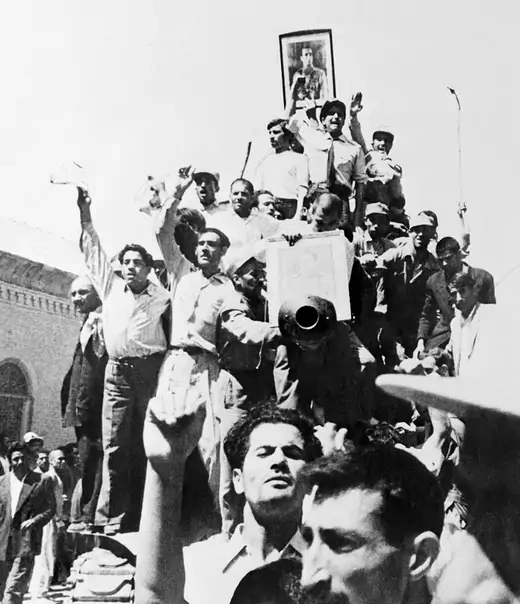
U.S. and British intelligence agencies help elements in the Iranian military overthrow Iran’s prime minister, Mohammed Mossadeq. This follows Mossadeq’s nationalization of the Britain-owned Anglo-Persian Oil Company, which led London to impose an oil embargo on Iran. The coup brings back to power the Western-friendly monarchy, headed by Shah Mohammad Reza Pahlavi. Deeply unpopular among much of the population, the shah relies on U.S. support to remain in power until his overthrow in 1979.
Iran Signs Oil Agreement
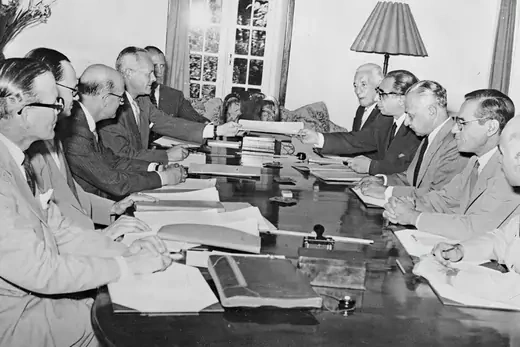
Under U.S. and UK pressure, the shah signs the Consortium Agreement of 1954, which gives U.S., British, and French oil companies 40 percent ownership of the nationalized oil industry for twenty-five years.
Atoms for Peace Program
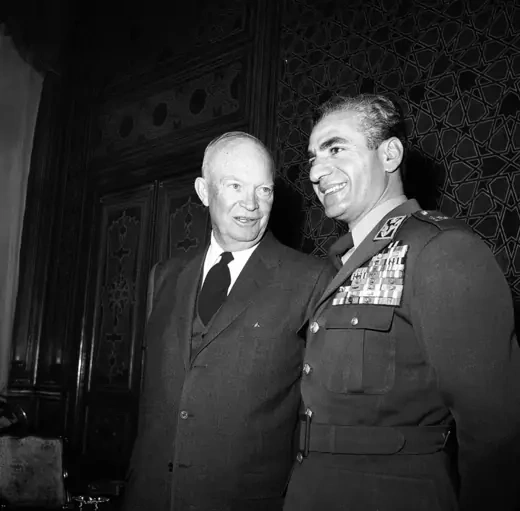
The United States and Iran sign the Cooperation Concerning Civil Uses of Atoms agreement as part of President Dwight D. Eisenhower’s “Atoms for Peace” initiative, under which developing countries receive nuclear education and technology from the United States. It lays the foundation for the country’s nuclear program, and the United States later provides Iran with a reactor and weapons-grade enriched uranium fuel. Their collaboration continues until the start of Iran’s 1979 revolution.
Birth of OPEC
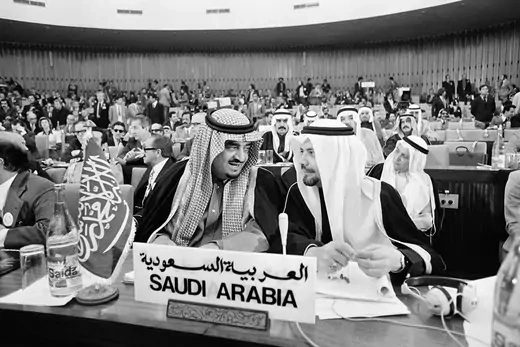
Iran, Iraq, Kuwait, Saudi Arabia, and Venezuela establish the Organization of the Petroleum Exporting Countries (OPEC) to rival the mostly Western companies dominating global oil supplies and to reestablish control over their domestic oil reserves. By the 1970s, OPEC profits skyrocket and the group gains considerable leverage over Western economies. Iran’s increased market clout makes it an even more crucial U.S. ally.
Nixon Visits Iran

President Richard Nixon travels to Iran to ask the shah for help protecting U.S. security interests in the Middle East, including by opposing a Soviet-allied Iraq. In return, Nixon promises that Iran can buy any nonnuclear weapons system it wants. Oil prices skyrocket amid the 1973 Arab-Israeli War and the subsequent Arab oil embargo against the United States, allowing the shah to purchase a larger supply of high-tech weaponry than anticipated, which unsettles U.S. officials.
Iranian Revolution

The shah flees amid widespread civil unrest and eventually travels to the United States for cancer treatment. Grand Ayatollah Ruhollah Khomeini, a Shiite cleric who opposed the shah’s Westernization of Iran, returns to the country after fourteen years in exile. Khomeini takes power as the supreme leader in December, turning Iran from a pro-West monarchy to a vehemently anti-West Islamic theocracy. Khomeini says Iran will try to “export” its revolution to its neighbors. In 1985, the militant group Hezbollah emerges in Lebanon and pledges allegiance to Khomeini.
Iran Hostage Crisis
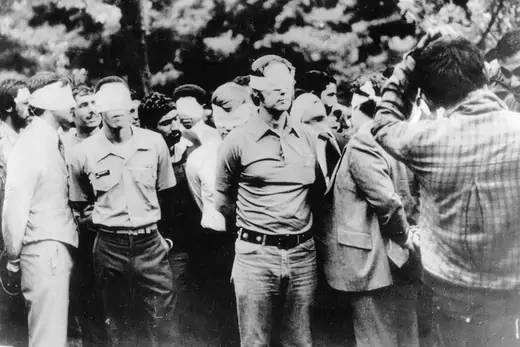
A group of radical Iranian college students takes fifty-two Americans hostage at the U.S. embassy in Tehran, demanding that the United States extradite the shah. Washington severs ties with Tehran, sanctions Iranian oil imports, and freezes Iranian assets. After 444 days, the hostages are released under the Algiers Accords [PDF], which were signed just minutes after the inauguration of President Ronald Reagan, whose 1980 presidential campaign emphasized President Jimmy Carter’s failure to free the hostages. As part of the accords, the United States promises not to intervene in Iranian politics.
Iran-Iraq War

Iraq invades its neighbor and growing rival Iran amid fears of a Shiite revolt against Iraqi leader Saddam Hussein. The United States supports secular Iraq with economic aid, training, and dual-use technology until the war ends in 1988, even after the CIA finds evidence that Iraqi forces used chemical weapons against Iranians. An estimated one million Iranians and 250,000–500,000 Iraqis die in the conflict.
Beirut Barracks Bombing

Two trucks loaded with explosives drive into barracks housing American and French service members of the Multinational Force in Lebanon, then detonate. The attack kills 241 U.S. military personnel—the highest single-day death toll for the U.S. Armed Forces since the Tet Offensive during the Vietnam War. A group named Islamic Jihad, widely believed to be a front for Hezbollah, claims responsibility for the attack. The bombing hastens the withdrawal of U.S. marines from Lebanon, and leads the State Department to designate Iran as a state sponsor of terrorism in 1984.
Iran-Contra Affair

Despite an arms embargo, senior Reagan administration officials begin secretly selling weapons to Iran to secure the release of seven Americans held hostage by Hezbollah in Lebanon. The officials use the money from the illegal deal to fund the right-wing Contras rebel groups in Nicaragua after Congress prohibits further funding of the insurgency. Reagan takes responsibility for the scandal in a 1987 televised address, and the affair ends in some officials’ convictions. Hezbollah kills two of the hostages and releases the others over several years.
Operation Praying Mantis
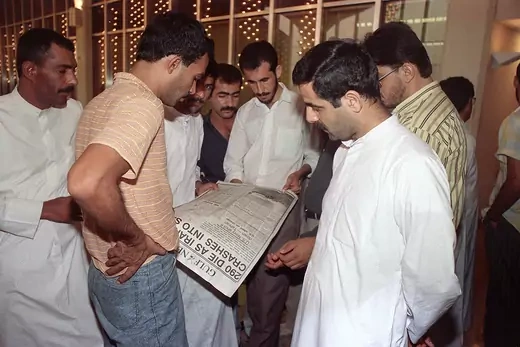
After an Iranian mine nearly sinks an American frigate in the Strait of Hormuz, the U.S. Navy launches a retaliatory campaign called Operation Praying Mantis. American forces destroy two Iranian oil platforms and sink a frigate. In July, the U.S. Navy shoots down an Iranian passenger jet after mistaking it for a fighter jet, killing all 290 people on board.
Persian Gulf War
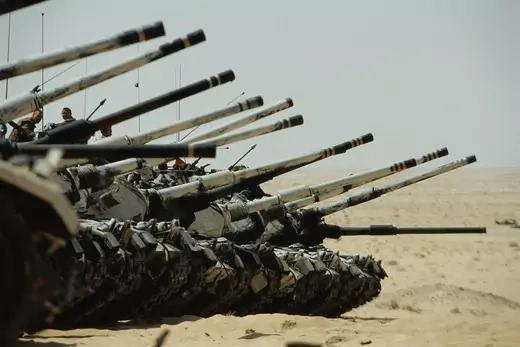
The United States leads a coalition of thirty-five countries to expel Iraqi forces occupying Kuwait, ousting the Iraqis in a matter of months. The war leads to intrusive UN inspections to prevent Iraq from restarting its weapons of mass destruction (WMD) programs. Comprehensive sanctions and widespread corruption under the Oil-for-Food Program, created in the wake of the war, devastate the Iraqi public for nearly a decade, but fail to dislodge Saddam. Iran declares its neutrality in the conflict, but U.S. officials suspect it seeks to replace Iraq as the dominant power in the region.
U.S. Intensifies Sanctions
The United States ramps up sanctions against Iran under the George H.W. Bush and Bill Clinton administrations. In 1992, Congress passes the Iran-Iraq Arms Nonproliferation Act, which sanctions materials that could be used to develop advanced weaponry. The White House expands sanctions with a complete oil and trade embargo in 1995. The 1996 Iran and Libya Sanctions Act imposes an embargo against non-American companies investing more than $20 million per year in Iran’s oil and gas sectors.
Mini Détente
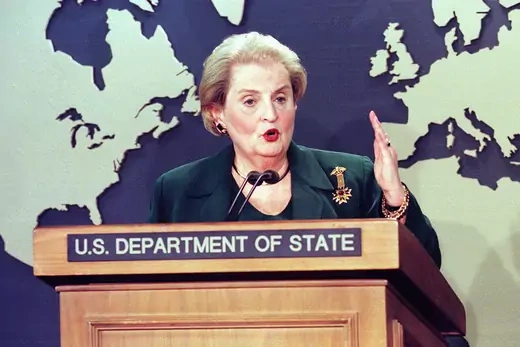
Secretary of State Madeleine Albright meets with Iran’s deputy foreign minister at the Six-Plus-Two talks during the 1998 UN General Assembly. It is the highest-level U.S.-Iran contact since 1979. In April 2000, Albright acknowledges the United States’ role in overthrowing Mossadeq and calls previous policy toward Iran “regrettably shortsighted,” although the United States does not explicitly apologize for the intervention. Some sanctions against Iran are lifted.
Bonn Agreement
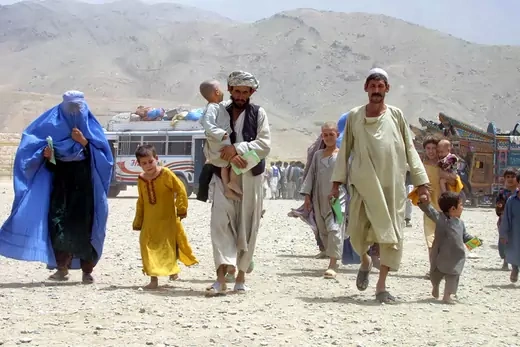
After the 9/11 terrorist attacks, President George W. Bush’s administration establishes a back channel with Iran to help coordinate the defeat of the Taliban, a shared enemy that had provided safe haven to members of al-Qaeda in Afghanistan. In the aftermath of the 2001 U.S. invasion of Afghanistan, the United States and Iran collaborate on the Bonn Agreement [PDF] regarding state-building and the repatriation of Afghan refugees.
‘Axis of Evil’
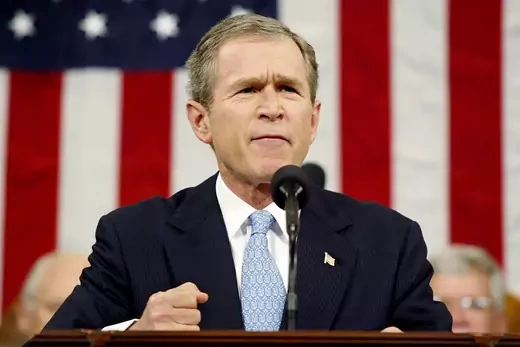
During his 2002 State of the Union address, President George W. Bush describes Iran as part of an “axis of evil,” along with Iraq and North Korea. He says Iran “aggressively pursues [weapons of mass destruction] and exports terror, while an unelected few repress the Iranian people’s hope for freedom.” In response, the Iranian government stops secret meetings with U.S. diplomats that are focused on capturing al-Qaeda operatives and combating the Taliban.
Iraq War Begins
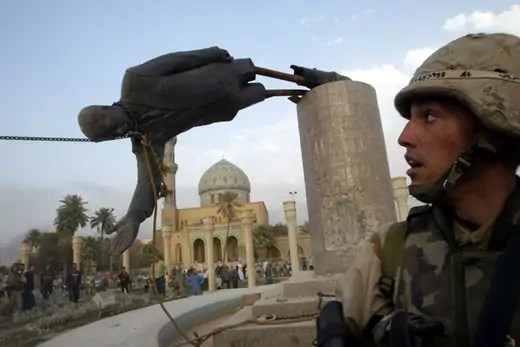
U.S. forces invade Iraq, aiming to end the threat posed by what Washington says are Saddam Hussein’s revived WMD programs. Iran backs local Shiite militias in Iraq, some of which participate in attacks on U.S. forces. Saddam’s dictatorship is toppled and he is executed in December. A 2019 U.S. Army study on the Iraq War concludes that “an emboldened and expansionist Iran appears to be the only victor” in the conflict.
Ahmadinejad’s Letter to Bush
Iranian President Mahmoud Ahmadinejad sends President George W. Bush an eighteen-page letter—the first letter from an Iranian leader to a U.S. one since 1979. Ahmadinejad seeks to ease U.S.-Iran nuclear tensions, but Iran takes no steps to slow its uranium enrichment program, which it says is for civilian energy production. Separately, the U.S. Congress approves the Iran Freedom Support Act in September to fund Iranian civil society and promote democracy.
Tensions at the United Nations
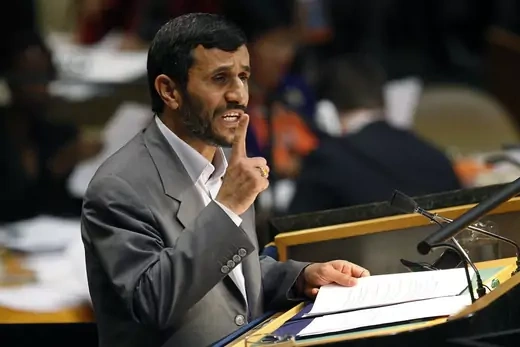
During a speech at the opening session of the UN General Assembly, Ahmadinejad calls the dispute over Iran’s nuclear program “closed” and says his government will disregard Security Council resolutions calling on the country to halt uranium enrichment. At a press conference afterward, he calls the Israeli government an “illegal Zionist regime.” A U.S. National Intelligence Estimate [PDF] released in November finds that Iran ended its nuclear arms program in 2003 but continued to enrich uranium.
Interim Nuclear Deal
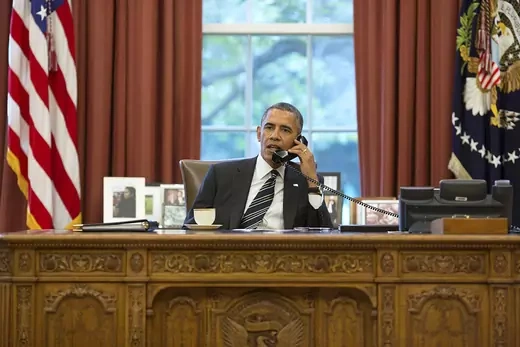
President Barack Obama calls newly elected Iranian President Hassan Rouhani in September to discuss Iran’s nuclear program, the most direct contact since 1979. Two months later, Iran and the P5+1—the five permanent members of the UN Security Council plus Germany—sign an initial nuclear agreement [PDF], providing Iran with some sanctions relief. Obama praises the deal for cutting off Iran’s “most likely paths to a bomb,” while Rouhani hails it as a “political victory” for Iran.
Joint Comprehensive Plan of Action
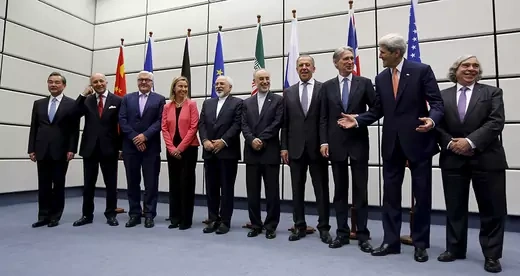
Iran, the P5+1, and the European Union reach an agreement on Iran’s nuclear program that is named the Joint Comprehensive Plan of Action (JCPOA). In return for sanctions relief, Iran agrees to undertake a series of steps, including dismantling and redesigning its nuclear reactor in Arak, allowing more intrusive verification mechanisms, and limiting uranium enrichment for at least fifteen years. The deal is meant to increase Iran’s “breakout time” for developing enough fissile material for a nuclear weapon from a few weeks to at least one year. Many Republican and some Democratic lawmakers oppose the deal, arguing that lifting sanctions will bolster the Iranian government and allow it to destabilize the region.
Trumps Pulls Out of JCPOA

President Donald Trump announces that the United States will withdraw from the JCPOA and mount a sanctions campaign to place “maximum pressure” on Iran. Many arms control experts and European allies condemn the move, while many Republican lawmakers, Israel, and Saudi Arabia applaud it. Iran responds by boosting uranium enrichment in defiance of the agreement’s terms. The withdrawal marks the beginning of rhetorical and military escalation with Iran under the Trump administration.
U.S. Designates IRGC a Terrorist Group

Trump designates the Islamic Revolutionary Guard Corps (IRGC)—a branch of the Iranian army—a foreign terrorist organization (FTO). It is the first time the United States designates part of another country’s government as an FTO. A week earlier, Israeli Prime Minister Benjamin Netanyahu tweets that he personally requested the move. Rouhani says the action will only increase the IRGC’s popularity at home and abroad.
Attacks in the Strait of Hormuz

On June 13, two oil tankers are attacked near the Strait of Hormuz, about a month after four commercial ships are damaged in the same area. The United States blames Iran for the attacks, with Trump calling the country “a nation of terror.” The United States announces the deployment of one thousand additional troops to the Middle East in response, and the IRGC shoots down a U.S. surveillance drone two days later. The United States again blames Iran for attacks on oil tankers in the region in the following months and tries to seize an Iranian vessel sailing near the British territory of Gibraltar.
Attacks on Saudi Oil Fields
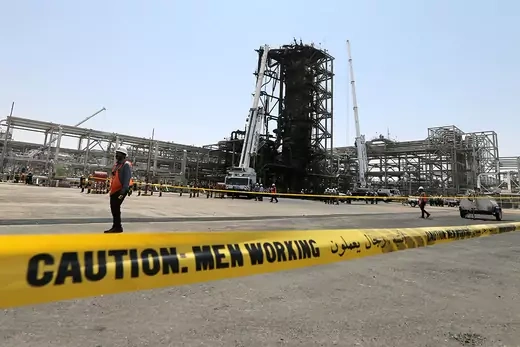
Drones attack oil facilities of state-controlled Saudi Aramco in eastern Saudi Arabia, striking the country’s second-largest oil field and a critical crude-oil stabilization center. The attack halts half the country’s oil output and causes an unprecedented jump in Brent crude prices. Trump approves the deployment of U.S. troops to bolster Saudi air and missile defenses at the kingdom’s request. Yemen’s Iran-backed Houthi rebels claim responsibility for the attack, citing Saudi intervention in Yemen’s civil war, but the United States and Saudi Arabia blame Iran.
Protests at U.S. Embassy in Baghdad
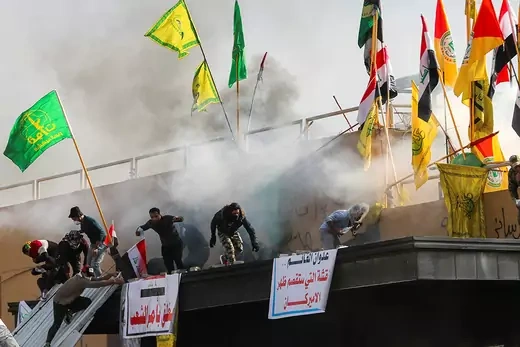
Iraqi demonstrators and Iran-backed militias attempt to seize the U.S. Embassy Baghdad in retaliation for an air strike that killed militia members. Protesters chant “death to America” and demand that the United States withdraw its troops from Iraq. In response, President Trump tweets that Iran will pay “a very big price” for any lives lost or damage incurred at U.S. facilities.
Killing of Qasem Soleimani
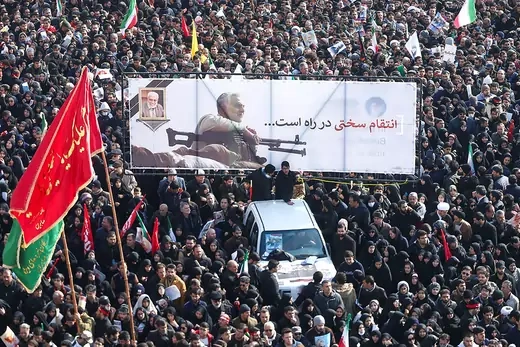
The United States kills Qasem Soleimani, commander of the IRGC’s elite Quds Force, with a drone strike in Baghdad. Soleimani was considered by some experts to be Iran’s second most powerful person after Supreme Leader Ali Khamenei. Iraqi militia leader Abu Mahdi al-Muhandis is also killed, along with seven other Iranian and Iraqi nationals. Iran promises revenge and announces that it will no longer commit to restrictions under the nuclear deal. Soon after, Iran mistakenly shoots down a Ukrainian passenger plane as Iranian forces are on high alert for possible U.S. attacks. It later attacks multiple U.S. bases in Iraq, wounding dozens of U.S. and Iraqi personnel.
Iran Ramps Up Military Maneuvers
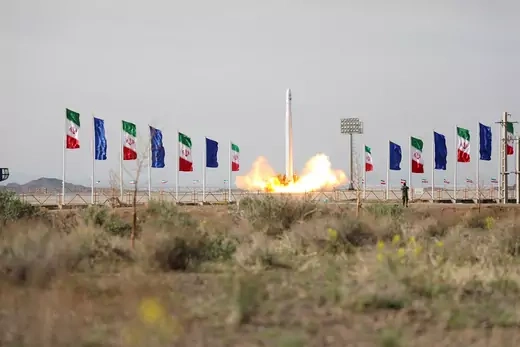
Iran launches its first military satellite, prompting U.S. concerns over Iran’s long-range missile capabilities. Days later, U.S. Secretary of State Mike Pompeo says the United States is still party to the JCPOA and will seek to snap back multilateral sanctions against Iran through a Security Council resolution. Opponents of the move, including JCPOA signatory Russia, argue that the United States abandoned the terms of the deal when the Trump administration’s reimposed sanctions on Iran. Iranian boats threaten U.S. Navy vessels in the Persian Gulf, but the United States does not respond militarily.
Venezuela Oil Shipments

Amid a shortage in Venezuela, Iranian tankers arrive to deliver oil despite U.S. sanctions on both countries. In June, the White House sanctions five Iranian ship captains involved in the delivery to discourage trade between Iran and Venezuela.
Failure to Extend UN Arms Embargo
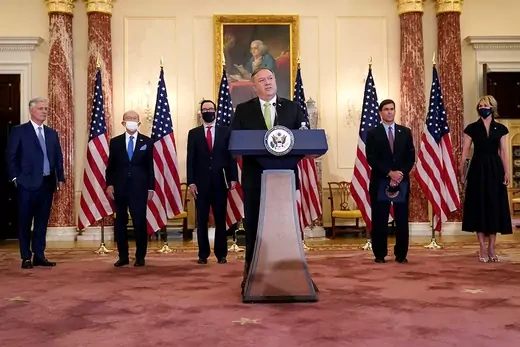
The Trump administration seeks to extend a decade-long UN arms embargo on Iran that is set to expire in October under the JCPOA. The administration contends that Iran is in violation of the deal and cannot be allowed to replenish its weapons stockpile. At the UN Security Council, a U.S.-backed resolution to extend the embargo fails, highlighting a lack of international support for Washington’s Iran policy and the United States’ diminishing influence. The United States also fails in its attempt to reimpose international sanctions on Iran using the JCPOA’s “snapback” mechanism, leading it to unilaterally sanction entities previously targeted by the United Nations and say it will continue to abide by the now-expired UN embargo.
Trump’s Final Sanctions Surge
Trump ramps up his maximum-pressure campaign against Iran with a flurry of new sanctions targeting entities in the oil and financial sectors and a leading charity, among others, as well as top officials. Washington cites as reasons for the new measures the Iranian government’s alleged interference in the 2020 presidential election, its suspected development of chemical weapons, and human rights abuses committed during a crackdown on protesters in November 2019.
Iran Boosts Uranium Enrichment
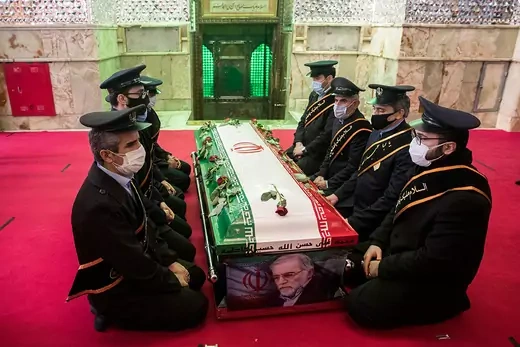
Following the assassination of Mohsen Fakhrizadeh, a top nuclear scientist, Iran’s parliament approves a bill to boost uranium enrichment to 20 percent—far beyond the concentrations permitted by the JCPOA. It also vows to expel International Atomic Energy Agency inspectors if sanctions on the banking and oil sectors are not lifted within two months. The bill passes with approval from Supreme Leader Khamenei, despite President Rouhani’s opposition. Iran blames Israel for Fakhrizadeh’s killing, and hard-liners insist the United States was also involved. Khamenei signals that U.S.-Iran relations will still be fraught under President-Elect Joe Biden.
Talks to Revive the JCPOA

The JCPOA’s signatories hold talks in Vienna aimed at bringing the United States and Iran back in compliance with the agreement. U.S. and Iranian officials attend the so-called proximity meetings to exchange ideas on sequencing a return to the deal. Each side insists that the other should be the first to resume its obligations, and they try to downplay expectations for immediate progress. The talks persist even after an explosion at Iran’s Natanz nuclear facility—which it blames on Israel—leads Iran to enrich uranium at a new high of 60 percent purity.
Nuclear Talks Stall After Raisi’s Election
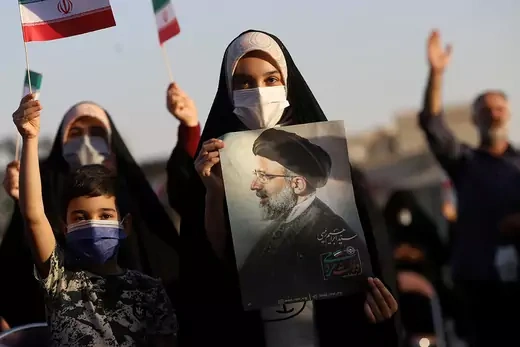
In June, Iran’s presidential election is won by conservative cleric Ebrahim Raisi, a judiciary chief targeted by U.S. sanctions due to his involvement in a 1988 panel that sentenced thousands of dissidents to death as well as his role in the repression of Iran’s 2009 Green Movement protests. Negotiations to revive the JCPOA stall for months as Raisi completes his transition to power. The talks resume in November, with Iran’s new negotiators adopting a more hard-line stance compared to their predecessors’. Meanwhile, there are signs that the country’s uranium-enrichment capabilities are advancing.
U.S., Mideast Allies Seek to Deter Iran
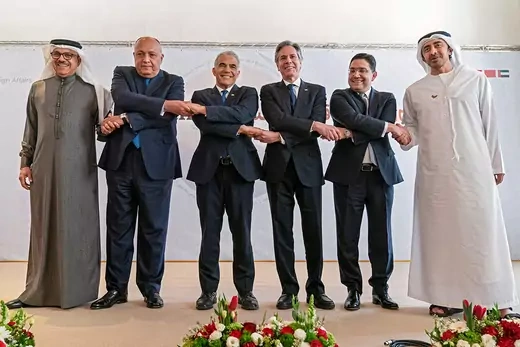
The United States, Bahrain, Egypt, Israel, Morocco, and the United Arab Emirates (UAE) establish the Negev Forum, a regional cooperation framework that aims to deter Iran, among other goals unrelated to defense. The same month, the United States secretly assembles military officers from Bahrain, Egypt, Israel, Jordan, Qatar, Saudi Arabia, and the UAE for a meeting focused on addressing Iran’s drone and missile capabilities.
Biden Warns Iran as Nuclear Talks Languish
Negotiations on reviving the nuclear deal pause during Russia’s invasion of Ukraine and, when they resume in June, yield little progress. U.S. officials warn that time to save the deal is running out as Iran reportedly accumulates enough enriched uranium to fuel a nuclear bomb, though creating a functional weapon could take months or years. During his first visit to Israel as president, Biden commits the United States to using “all elements of its national power” to prevent Iran from acquiring a nuclear weapon.
U.S. Backs Iran’s Protesters, Nuclear Talks On Hold
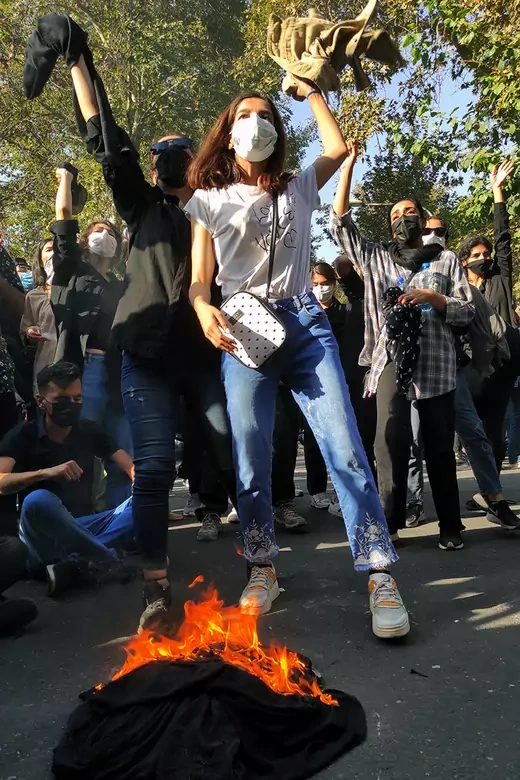
A wave of women-led protests roils Iran, with many demonstrators denouncing Supreme Leader Khamenei and calling for an end to the Islamic Republic. Security forces try to suppress the demonstrations, restricting internet and cellular service and arresting some 12,500 people. They kill over two hundred protesters. The Biden administration sanctions entities involved in the crackdown and exempts tech companies from other sanctions to help Iranians access the internet. Meanwhile, the White House signals that nuclear talks are indefinitely stalled due to the protests and Iran’s apparent support of the Russian invasion of Ukraine.
Prisoner Swap Deal Emerges
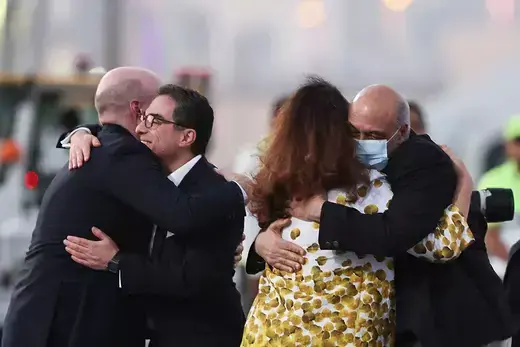
Washington issues a sanctions waiver that frees up $6 billion in Iranian funds frozen in South Korea in return for the release of five Iranian American dual citizens detained in Iran. Republican lawmakers criticize the deal—said to be mediated by governments including Iraq, Oman, Qatar, Switzerland, and the United Kingdom—as a ransom paid to a hostile government. U.S. officials say the funds offer limited benefit to Iran, which can only access the capital indirectly and use it to buy humanitarian goods. Days later, Biden also grants clemency to five Iranians jailed in the United States, though only two plan to return to Iran.
Hamas Attack on Israel Costs Iran
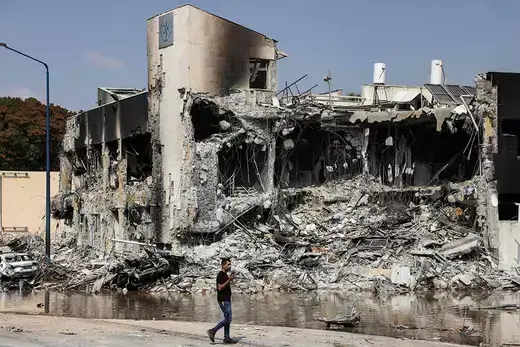
Iran-backed Palestinian militant group Hamas launches a surprise assault on Israel in early October that kills more than 1,300 Israelis, the country’s deadliest-ever attack on civilians. The group also captures dozens more Israelis as hostages. After the attack, the United States and Qatar cooperate to block Iran from accessing the $6 billion in humanitarian assistance released to it in September. U.S. and regional intelligence officials find no immediate evidence of Iran’s direct involvement in Hamas’s offensive, but experts say the country had provided weapons and training to the group in the months prior.
 Online Store
Online Store